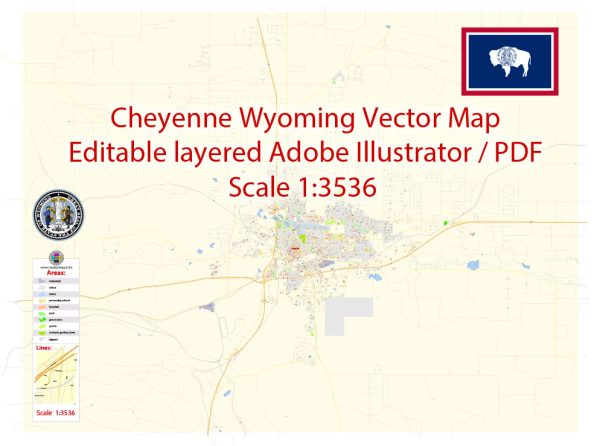Cheyenne, Wyoming, is the capital and largest city of the state of Wyoming, USA. Its history is closely tied to the development of the American West and the expansion of the United States into the frontier. Here is a brief description of Cheyenne’s history:
- Early History: The area that is now Cheyenne was originally inhabited by Native American tribes, including the Cheyenne and Arapaho. European-American exploration and settlement of the region began in the mid-19th century as part of westward expansion.
- Railroad Era: Cheyenne’s history is closely linked to the development of the First Transcontinental Railroad. The city was founded in 1867 when the Union Pacific Railroad reached the area. It was named after the Cheyenne Native American tribe and quickly became a major railway hub. The city’s growth was fueled by the railroad, making it a significant transportation and commercial center in the West.
- Territorial Capital: In 1869, Cheyenne was named the capital of the Wyoming Territory, which had been established just two years earlier. This designation solidified the city’s importance in the region.
- The Wyoming Statehood: Wyoming became the 44th state of the United States on July 10, 1890, and Cheyenne retained its status as the state capital. The city continued to grow and develop during the early 20th century.
- Military Presence: Cheyenne also has a strong military history, with the Francis E. Warren Air Force Base, originally a U.S. Army fort, being established in the late 19th century. The base played a significant role in the development of the city and remains an important part of the community.
- Frontier Heritage: Cheyenne is known for its rich Western heritage and is home to the Cheyenne Frontier Days, one of the largest rodeo and western celebrations in the world. This event has been held annually since 1897, attracting visitors from all over the country.
- Modern City: Today, Cheyenne is a thriving city with a diverse economy that includes government services, agriculture, transportation, and energy production. It retains its Western charm and celebrates its history through museums, historic sites, and cultural events.
Cheyenne’s history is a testament to the rugged spirit of the American West and its role in shaping the nation’s history during the era of westward expansion. It continues to be an important part of Wyoming’s cultural and economic landscape.


 Author: Kirill Shrayber, Ph.D.
Author: Kirill Shrayber, Ph.D.